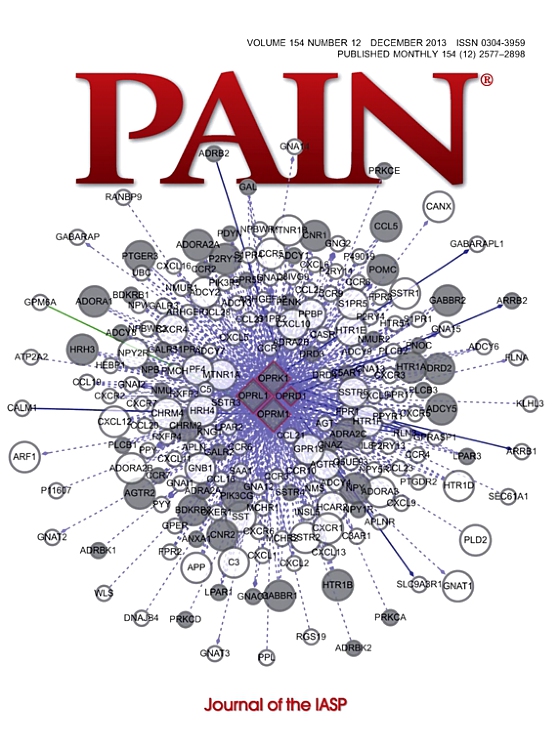White matter microstructural associations with pain experiences in a large community sample of youth.
IF 5.9
1区 医学
Q1 ANESTHESIOLOGY
引用次数: 0
Abstract
Pain experiences in adolescence are increasing and represent a major public health concern. However, little is known about the neurobiological phenotype of pain experiences in adolescents, particularly outside of a clinical setting. A better neurobiological understanding of pain experiences in community youth may shed light on potential vulnerabilities present before clinical diagnoses of chronic pain. This study utilized an exploratory region-of-interest approach, in a large community sample (n = 7332) of youth (ages 11-12), to examine the association between white matter microstructure, fractional anisotropy (FA) and mean diffusivity (MD), and pain experiences. Bayesian multilevel modeling was used to explore group differences (between those reporting past-month pain and those who did not), and continuous associations between pain experiences (average pain intensity, worst pain intensity, and pain-related limitations) and FA and MD. Sex differences in these effects were also explored. Analyses revealed widespread associations between pain-related limitations and lower FA and greater MD in male but not female youth. Furthermore, average pain intensity was associated with greater superior corticostriate and superior longitudinal fasciculus MD in all youth, and worst pain intensity was associated with lower inferior fronto-occipital fasciculus FA in male youth. There were no group differences in FA or MD between those with or without past-month pain. These findings suggest that white matter microstructural alterations in youth may be more related to the severity of the pain experience than to the presence or absence of pain itself, with male youth showing stronger neurobiological associations with pain-related outcomes.在大量社区青年样本中,白质微观结构与疼痛经验的关联。
青少年的疼痛经历正在增加,是一个主要的公共卫生问题。然而,对青少年疼痛经历的神经生物学表型知之甚少,特别是在临床环境之外。对社区青年疼痛经历的更好的神经生物学理解可能会揭示慢性疼痛临床诊断前存在的潜在脆弱性。本研究采用探索性兴趣区方法,在一个大型社区样本(n = 7332)的青年(11-12岁)中,研究白质微观结构、分数各向异性(FA)和平均扩散率(MD)与疼痛体验之间的关系。贝叶斯多层模型用于探索组间差异(报告过去一个月疼痛的患者和没有报告过去一个月疼痛的患者之间),以及疼痛经历(平均疼痛强度、最严重疼痛强度和疼痛相关限制)与FA和MD之间的持续关联。这些影响的性别差异也被探讨。分析显示,在男性青年中,但在女性青年中,疼痛相关限制与较低FA和较大MD之间存在广泛的关联。此外,在所有青年中,平均疼痛强度与较大的上皮质酸和上纵束MD相关,而在男性青年中,最严重的疼痛强度与下额枕束FA相关。有或没有过去一个月疼痛的患者在FA或MD方面没有组间差异。这些发现表明,年轻时白质微观结构的改变可能与疼痛体验的严重程度有关,而不是与疼痛本身的存在与否有关,男性青年与疼痛相关的结果显示出更强的神经生物学关联。
本文章由计算机程序翻译,如有差异,请以英文原文为准。
求助全文
约1分钟内获得全文
求助全文
来源期刊

PAIN®
医学-临床神经学
CiteScore
12.50
自引率
8.10%
发文量
242
审稿时长
9 months
期刊介绍:
PAIN® is the official publication of the International Association for the Study of Pain and publishes original research on the nature,mechanisms and treatment of pain.PAIN® provides a forum for the dissemination of research in the basic and clinical sciences of multidisciplinary interest.
 求助内容:
求助内容: 应助结果提醒方式:
应助结果提醒方式:


